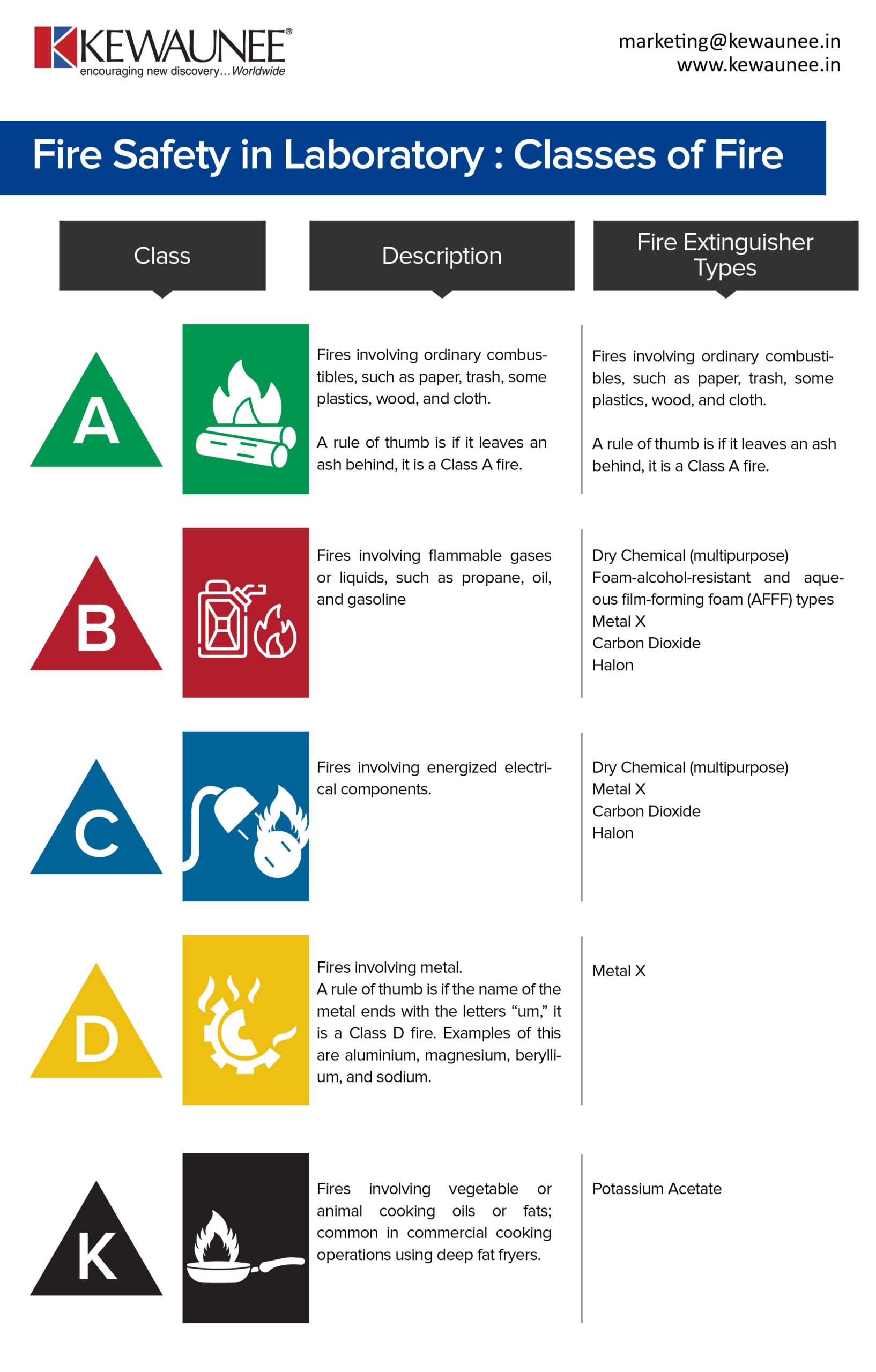Fire Safety In Laboratory Classes Of Fire
Fire hazards are extremely high in laboratories, as the necessary ingredients for a chemical reaction to start a fire are available in the laboratory.
The fire triangle (aka combustion triangle) helps us understand the necessary ingredients for most fires:
- Heat or ignition source
- Fuel
- Oxygen or oxidizing agents.
When all three elements are present in the right proportions a fire starts. Once ignited, if there is a continuous supply of oxidizer and fuel, then a chain reaction takes place. In a chain reaction, the fires can sustain their own heat by the further release of heat energy in the process of combustion and may propagate. This is commonly referred to as the Fire Tetrahedron.
The Occupational Safety and Health Administration (OSHA) requires employers to implement fire protection and prevention programs in the workplace. Based on the fuel type for the fire, OSHA classifies fires into five different classes – Class A, B, C, D, and K.
The fire’s class helps understand how dangerous the fire could be, how quickly it can burn and spread, and the best way to suppress the fire.
| A | Fires involving ordinary combustibles, such as paper, trash, some plastics, wood, and cloth.
A rule of thumb is if it leaves an ash behind, it is a Class A fire. |
|
| B | Fires involving flammable gases or liquids, such as propane, oil, and gasoline |
|
| C | Fires involving energized electrical components. |
|
| D | Fires involving metal.
A rule of thumb is if the name of the metal ends with the letters “um,” it is a Class D fire. Examples of this are aluminium, magnesium, beryllium, and sodium. |
|
| K | Fires involving vegetable or animal cooking oils or fats; common in commercial cooking operations using deep fat fryers. |
|
There are limitations for each extinguisher type depending on the application and hazard. Please consult with the experts before you setup your fire safety systems.
Comments are closed.











